Nursing bridge programs offer a fast-track route for healthcare professionals who want to climb the career ladder without repeating coursework they already mastered. By awarding credit for hands-on experience, these pathways let a licensed practical nurse vault to registered-nurse status—or an associate-prepared RN earn a bachelor’s or even a master’s—often in half the time of a traditional degree.
Beyond the time savings, bridge tracks deliver tangible rewards: bigger paychecks, expanded clinical authority, and fresh specialty options ranging from emergency flight nursing to advanced practice. Because many programs run online or in hybrid blocks, students can keep their current jobs while ticking off rigorous courses and supervised clinical hours on nights, weekends, or short campus intensives.
This guide breaks down every major bridge—from CNA-to-LPN to RN-to-MSN—spotlighting typical timelines, tuition ranges, admission tips, and standout schools across the United States. Read on to discover which route matches your goals, budget, and schedule.
What Are Nursing Bridge Programs?
Nursing bridge programs are educational pathways that allow individuals with an existing healthcare background to advance to the next level of nursing credentials more quickly than a traditional route. These programs build on prior education and experience – for example, a licensed practical nurse (LPN) can bridge to become a registered nurse (RN) without starting from scratch.
Bridge programs often have accelerated schedules and credit for prior learning or work experience, enabling students to graduate faster than in standard programs. They are designed with working professionals in mind, offering flexible coursework (sometimes online) and recognizing the skills students already possess. In short, a bridge program “bridges” the gap between one level of nursing and a higher one, whether that’s moving from a certified nursing assistant (CNA) to an LPN, an LPN to an RN, or an RN with a diploma to a bachelor’s or master’s degree.
Key features of bridge programs include: accelerated curriculum, acknowledgement of prior clinical experience, and often tailored scheduling (e.g. evening, weekend, or online classes) for those who may continue to work while studying. By leveraging what a student has already learned on the job, bridge programs can focus on new competencies needed for the next credential. For example, an RN-to-BSN bridge program will skip basic nursing skills (since the RN already has them) and instead teach higher-level nursing theory, leadership, and research skills needed for a bachelor’s degree.
Why Do Nurses Pursue Bridge Programs?
Nurses and other health workers choose bridge programs for a variety of professional and personal reasons:
1. Career Advancement
A bridge program opens the door to higher-level nursing roles. For instance, an LPN who becomes an RN can take on more responsibility and perform more complex procedures. Similarly, an RN who earns a Master of Science in Nursing (MSN) can move into advanced practice, education, or administrative roles. These advancements often come with greater autonomy and leadership opportunities.
2. Higher Earning Potential
Advancing your credentials usually comes with a pay raise. As an example, RNs earn significantly more on average than LPNs – roughly 60% more, according to national data. A paramedic who becomes an RN might see an average salary increase of around 66%. Even moving from an RN with an associate degree to a BSN can boost earnings by an estimated 20% or more on average. Bridge programs are attractive because they can lead to these salary gains faster than the traditional route.
3. Increased Job Opportunities and Security
Many employers (especially hospitals) prefer or require higher credentials for certain positions. For example, some U.S. hospitals now require RNs to have a BSN for hiring or promotion (often due to “Magnet” status guidelines). By bridging up – say from RN to BSN – nurses make themselves more marketable and eligible for a wider range of jobs (ICU, public health, management, etc.). Similarly, an MSN can qualify a nurse for roles like nurse practitioner or educator, which would be unattainable as a bedside RN. In a competitive healthcare job market, a higher credential can provide job security and flexibility to work in different settings.
4. Efficiency and Flexibility
Bridge programs save time and often money. Because they give credit for prior learning or license, they prevent redundant education. For a working nurse or medic, this means you can keep working (often programs are designed to be work-compatible) and finish faster than starting a new degree from scratch. Many bridge programs, particularly at the RN-to-BSN and RN-to-MSN levels, are offered online or in hybrid formats, providing flexibility to balance school with work and family commitments. This flexibility is a major reason nurses choose bridge pathways – they don’t have to put their life on hold to advance their education.
5. Personal Fulfillment and Development
Finally, many pursue bridge programs for the personal achievement of earning a higher degree or license. Nurses are lifelong learners, and advancing from one role to the next is a source of pride and professional growth. Bridge programs can be an accessible way to reach a long-term goal (for example, a CNA who aspires to become an RN, or an RN who dreams of being a nurse practitioner).
Bridge programs offer a fast track to career growth, higher salaries, and broader opportunities – all while valuing the experience a healthcare worker already has. Next, we’ll discuss the different types of nursing bridge programs.
Types of Nursing Bridge Programs
The U.S. has numerous bridge programs catering to different starting points in one’s nursing career. Below, we break down the common types of nursing bridge programs, including typical timelines, costs, and examples of each.
1. CNA-to-LPN Bridge Programs
Certified Nursing Assistants (CNA) generally assist patients with basic care (bathing, feeding, vital signs, etc.), but Licensed Practical Nurses have a broader scope: they perform clinical tasks like administering certain medications, wound care, and more direct patient assessments under RN supervision. A CNA-to-LPN bridge program allows a CNA to build on their foundational skills and step up into the practical nurse role.
| From | To |
|---|---|
| Certified Nursing Assistant | Licensed Practical Nurse (LPN) |
Duration
Typically 6–12 months of coursework for full-time programs. Some programs may extend to around 18 months if taken part-time or if prerequisite courses are needed. On average, community college LPN programs last about 1 year of full-time study. Note that program length can vary by state requirements and whether the CNA receives credit for prior training – in some cases, CNA experience might waive an introductory course, slightly shortening the program.
Curriculum
Coursework often includes anatomy & physiology, pharmacology, adult nursing, maternal-child nursing, and clinical rotations. Bridge programs leverage CNA experience – for example, CNAs are already familiar with basic patient care, so the LPN training focuses on higher-level nursing skills and theory. Clinical requirements are included; even online programs require in-person clinical hours for licensure.
Cost
CNA-to-LPN tuition typically falls between $10,000 and $15,000, but can swing from about $4,000 at public technical colleges to $28,000 at private or out-of-state schools. Remember to add textbooks, uniforms, lab and exam fees, and any travel or housing costs to your final budget.
Financial Aid
Accredited CNA-to-LPN students can tap FAFSA for Pell Grants or federal loans, hunt state nursing scholarships and workforce grants, and even secure employer tuition reimbursement. Veterans should also explore GI Bill coverage.
Why CNAs Bridge to LPN
Switching from CNA to LPN boosts both pay and autonomy. CNAs earn roughly $38,000–39,000 per year; LPNs average salary is about $60,000—a fifty-percent jump that can repay training costs in one to two years. Beyond the paycheck, LPNs handle a wider range of clinical tasks, so the job can feel more challenging and satisfying. And for anyone eyeing an RN license down the road, the LPN credential is a logical next step on nursing’s career ladder.
Example CNA-to-LPN Bridge Programs
Many community colleges and vocational schools across the U.S. offer CNA-to-LPN or entry-level LPN programs. For instance, Herzing University offers an online CNA-to-LPN bridge program designed for working CNAs, which lasts about 1 year. In this program, general education courses are online, while core nursing courses include some on-campus components, blending flexibility with hands-on training. Another example is the Community College of Rhode Island (CCRI), which has a CNA-to-LPN bridge option giving admission preference and advanced standing to students who completed the college’s CNA program.
| School / Program | Format | Typical Length |
|---|---|---|
| Herzing University – CNA-to-LPN Bridge | Hybrid: Online general-ed + on-campus nursing labs | ~1 year |
| Community College of Rhode Island – CNA-to-LPN Option | On-Campus: Primarily on-campus and local clinical sites | Varies by semester load |
These programs illustrate the range of options from fully online hybrids to local campus-based diplomas. Always ensure the program is state-approved for LPN licensure – graduates must pass the NCLEX-PN exam to become licensed LPNs in their state.
2. LPN-to-RN Bridge Programs
An LPN-to-RN program prepares a practical nurse to meet the requirements of a registered nurse role. RNs have a broader scope of practice, can perform assessments and make care plans independently, administer IV medications, and generally take on more complex patient care duties than LPNs. RNs can also supervise LPNs and CNAs. Bridging from LPN to RN typically means earning either an Associate Degree in Nursing (ADN) or a Bachelor of Science in Nursing (BSN), both of which qualify the graduate to sit for the NCLEX-RN licensure exam. This is one of the most popular bridge pathways in nursing.
Duration
The length of LPN-to-RN programs depends on the degree pursued and the structure of the program:
LPN-to-ADN Route
Often about 1 year of full-time study beyond the LPN. Many community college programs allow LPNs to enter in the second year of a traditional two-year ADN program. Thus, an LPN can complete an associate degree in roughly 12–18 months (full-time), since the first year’s coursework is either accelerated or credited through advanced standing. Part-time options might take closer to 2 years. Some LPN-to-ADN tracks require a “bridge” course (covering role transition and any gaps in training) then the remaining nursing courses of the ADN curriculum.
LPN-to-BSN Route
Typically 2 to 3 years of study. Because a BSN is a four-year degree, even with LPN advanced standing, there are more academic credits to complete. Many programs advertise LPN-to-BSN completion in about 2 years if full-time (sometimes called an accelerated LPN-BSN). If attending part-time or needing general education courses, it could be 3 years. The advantage is ending up with a bachelor’s degree, which can be important for long-term career growth. Some students skip the ADN and go straight for BSN to avoid returning to school again later.
In both cases, the program length is shorter than a generic RN program because LPNs receive credit for prior nursing coursework and experience. For example, an LPN-to-ADN bridge might be 3 semesters instead of 4; an LPN-to-BSN might be ~5–6 semesters instead of 8. Students still must meet all RN curriculum outcomes and clinical hour requirements before they can graduate and take the NCLEX-RN.
Cost
Costs vary by institution and degree:
LPN-to-ADN programs (usually at community colleges) might cost anywhere from around $6,000 on the low end to $30,000 or more at private colleges. Many community colleges fall in the $10–20k total range for an associate RN degree. For example, tuition for ADN programs can range roughly $12,000 to $35,000 in total. LPN-bridge students might pay slightly less if they bypass some credits, but usually the cost is proportional to credits needed.
| Bridge Path | Typical Tuition | Notes |
|---|---|---|
| LPN-to-ADN | $6,000 – $30,000 Most fall between $10,000 and $20,000 | Tuition fee drops if prior LPN credits replace first-year courses. |
| LPN-to-BSN | Public in-state: about $20,000 – $40,000 Private: $50,000+ (some programs top $100,000) | Advanced standing trims credits—and cost—compared with a freshman BSN. |
LPN-to-BSN programs (often at universities) tend to be more expensive since BSN requires more credits. Public universities might charge in-state students anywhere from ~$20,000 to $40,000 for the full BSN bridge (tuition), whereas private universities could be $50k+. According to national data, a 4-year BSN can cost from $25,000 (in-state public) up to $100,000+ (private). An LPN-to-BSN might knock off some of that cost by eliminating redundant courses. For instance, Indiana State University (a school known for an LPN-to-BSN distance program) charges per credit, and since LPNs validate some prior coursework, the total credits (and total tuition) are reduced compared to a freshman-entry BSN.
Students should also factor in fees (labs, simulation, insurance), books, commuting, and the cost of the NCLEX-RN exam and state licensure fees at the end. On the flip side, many LPNs continue working while in a bridge program, which can help finance their education.
Financial Aid
Like other accredited nursing programs, LPN-to-RN bridges qualify for federal aid. Many LPNs pursuing RN take advantage of federal Pell Grants, state nursing scholarships, and federal loans. Because bridging to RN is considered higher education, there are often scholarships specifically for LPN-to-RN students offered by state boards of nursing or professional associations aiming to alleviate the nursing shortage. Some employers offer tuition reimbursement if the LPN continues to work part-time (e.g. a hospital might pay a portion of RN schooling if you agree to work there as an RN after graduation). Military veterans can use GI Bill benefits as well. It’s also worth noting that some states have loan forgiveness programs for RNs who advance their degree and work in underserved areas (this could apply to someone who was an LPN now becoming an RN). In short, numerous funding avenues exist – students should consult their school’s financial aid office and look for nursing-specific grants.
Why LPNs Bridge to RN
Becoming a Registered Nurse is a logical next step for an LPN for multiple reasons. Moving from LPN to RN dramatically widens both authority and opportunity. Registered Nurses can perform full patient assessments, make independent nursing diagnoses, and implement care plans—responsibilities that LPNs, working under supervision, cannot assume. This greater autonomy opens doors to a far broader job market: acute-care hospitals, critical-care units, community health, public health, and countless specialties that remain out of reach for practical nurses.
The pay gap is just as persuasive. Average U.S. RN earnings hover around $93,000 versus $51,000 for LPNs—a 60-plus-percent jump that compounds over a career. An RN license is also the ticket to leadership and specialty roles—charge nurse, manager, emergency or pediatric staff—that explicitly require registered-nurse status. Because an LPN-to-RN bridge can be finished in as little as one to two years, many practical nurses see it as the fastest, most cost-effective way to boost professional independence, career mobility, and lifetime income.
Example LPN-to-RN Bridge Programs
Almost all states offer LPN-to-RN pathways. A few examples:
| School / System | Bridge Path | Format | Highlights |
|---|---|---|---|
| Arkansas State University | LPN-to-AASN | Fully online, fast-track | 66 total credits with advanced placement for LPN experience |
| Western Kentucky University | LPN-to-ADN | Primarily on-campus | Includes an “LPN to RN Role Transition” course integrated into the curriculum |
| Purdue University Northwest | LPN-to-BSN | Hybrid / on-campus | Awards significant advanced standing; active LPN license required |
| Chamberlain University | LPN-to-BSN | Online + limited on-site skills | National reach, year-round starts; designed for working LPNs |
| Community College Systems (Florida, Ohio, California, etc.) | LPN-to-ADN | Local campus or hybrid | Numerous state-approved options; affordable tuition and strong NCLEX-RN pass rates |
Community college systems in states like Florida, Ohio, and California have many LPN-to-RN offerings as well. Always check that the program is accredited (ACEN or CCNE) and approved by the state board of nursing. You may check if the program is accredited via the ACEN website here. After completing the bridge, graduates must pass the NCLEX-RN exam for RN licensure.
3. RN-to-BSN Programs
An RN-to-BSN program is often called a “completion” program. Unlike other bridges, the RN-to-BSN does not change the nursing license level – graduates are still RNs (no new licensure exam). However, it confers the bachelor’s degree, which is increasingly the standard in professional nursing. The curriculum in RN-to-BSN focuses on advanced topics like nursing research, public health, leadership/management, and sometimes electives in specialties. It assumes the student already has core clinical skills and RN licensure. RNs who received their training through a two-year ADN program or a hospital diploma program and now want to earn a bachelor’s degree.
| From | To |
|---|---|
| Registered Nurse (Associate Degree or Diploma) | Bachelor of Science in Nursing (BSN) |
Duration
Most RN-to-BSN programs can be completed in about 1 year of full-time study. Many are structured as three or four semesters (e.g., fall-spring-summer) if taken full-time. There is considerable flexibility – part-time enrollment might take about 2 years.
Some aggressive online programs advertise completion in as few as 9 months if a student takes a heavy course load continuously. For example, the University of Texas at Arlington offers an online RN-to-BSN that can be finished in 9 months with full-time, accelerated pacing. On the other hand, programs designed for working RNs often allow a slower pace, maybe 18–24 months, taking one course at a time. The exact timeline depends on how many credits the RN needs (they usually need to complete the BSN’s upper-division nursing courses and any missing general education credits).
Most RN-to-BSN students already have around 60–70 credits from their ADN; a BSN typically requires ~120 credits total. Bridge programs accept a block of transfer credits from the ADN and then require roughly 30 additional nursing credits (plus any liberal arts courses lacking). That’s why it can be done in about a year (e.g., ~30 credits). Many programs also give credit for RN work experience or prior professional development.
Cost
RN-to-BSN programs vary, but they are often relatively affordable, especially through state universities or online programs. Costs can range roughly from $5,000 up to $30,000 for the entire program, with many falling in the low-to-mid teens (in thousands). There are extremely inexpensive options: certain competency-based programs (like Western Governors University) can be under $5,000 if a student moves quickly. On the higher end, private colleges might charge $20k–$30k.
This is about $257/credit hour for 35 credits. Another example: some state university RN-BSN programs charge roughly $300/credit; for ~30 credits that’s around $9,000. If general education courses are needed, those add to cost but can sometimes be taken cheaply at community colleges. Students should compare prices and also consider fees and the cost of any travel for on-site components (though most RN-BSNs are fully online aside from a community project or similar).
Financial Aid
Since RN-to-BSN is often pursued by working nurses, many hospitals offer tuition reimbursement for it. It’s common for employers to pay a set amount per year (for example, $5,000/year) for nurses to get their BSN, especially if the BSN is required for the job in the future. Apart from employer support, RN-to-BSN students can use federal aid (loans or grants if eligible). Scholarships specifically for RN-to-BSN students exist but are less abundant than for entry-level nursing; however, some organizations (like state nursing foundations or the U.S. Health Resources & Services Administration) have funding to encourage BSN education. Active duty military or veterans have education benefits that can apply, and some schools offer discounts to nurses in partner health systems. The bottom line: financing an RN-to-BSN is often manageable, especially if you work concurrently and have tuition assistance. Additionally, since many RN-BSN programs are part-time friendly, students often “pay as they go” by taking a couple of courses per semester and using income to cover costs.
Why RNs Bridge to BSN
The push for BSN-prepared nurses has been strong in the U.S. The Institute of Medicine (IOM) recommended increasing the proportion of BSN nurses due to evidence of better patient outcomes in acute care settings with more BSN staff. Many hospitals now either require new hires to have a BSN or expect an ADN-prepared RN to obtain a BSN within a few years. Therefore, obtaining a BSN can be crucial for job security and advancement. Career-wise, a BSN is needed for roles like nurse manager, public health nurse, military nursing, or pharmaceutical industry jobs. It’s also the stepping stone for graduate education (MSN, DNP) if one aims to become a nurse practitioner, educator, etc.
Salary
While an ADN and BSN RN often start at the same bedside role, BSN-prepared nurses may have higher earning potential in the long run, especially as they move into leadership. Some employers offer a small pay differential for BSN (e.g., a few dollars more per hour). On average, BSN nurses earn about 20% more than ADN nurses across all roles, though this depends on position and region.
Skill development
BSN programs teach research, evidence-based practice, and community health – enhancing a nurse’s professional scope. Many RNs also pursue the BSN for personal fulfillment and to meet the growing industry standard (it’s sometimes seen as necessary for being considered a “professional” nurse in certain sectors).
Example Programs
There are hundreds of RN-to-BSN programs. Online options are extremely prevalent – e.g., Chamberlain University (a private nursing college) has an online RN-BSN that can be completed in as few as 3 semesters. Arizona State University and Ohio State University have well-ranked online RN-BSN programs as well. Many state university systems (like California State University or University of North Carolina) offer mostly or fully online RN-BSN tracks for in-state students. For those who prefer classroom learning, some universities offer evening or weekend on-campus programs.
| School / System | Delivery Mode | Key Features |
|---|---|---|
| Chamberlain University | Fully online | Can finish in 3 semesters |
| Arizona State University | Fully online | Nationally ranked RN-BSN |
| Ohio State University | Fully online | Nationally ranked RN-BSN |
| University of Texas at Arlington | Accelerated online | Five-week courses; tuition under $9,000 |
| California State University System | Mostly / fully online (in-state) | Affordable public-school option |
| University of North Carolina System | Mostly / fully online (in-state) | Multiple campuses, public tuition |
| Various universities (evening/weekend tracks) | On-campus, nights or weekends | Suits nurses who prefer face-to-face classes |
An example of an accelerated online track is the University of Texas at Arlington (UTA) which we mentioned: UTA’s program is formatted in 5-week courses and can be done very quickly, with total tuition under $9k. When choosing, nurses often look for an accredited program that is affordable and fits their schedule. Since no additional licensure exam is needed (the RN license is already held), it’s mainly about getting the degree and the knowledge. Most programs will include a capstone project (sometimes a community health project) in lieu of traditional clinicals, since RN students are often working in clinical environments already.
4. RN-to-MSN Bridge Programs
RN-to-MSN programs are sometimes called “ADN-to-MSN” programs. They essentially combine the curriculum of a BSN and MSN, streamlining the path. In many cases, a student does earn a BSN along the way or is awarded a BSN after a certain portion of the program, then continues to MSN. Other programs directly confer an MSN (with or without awarding a BSN). These programs typically have specializations at the MSN level, such as Nurse Practitioner, Nurse Educator, Nursing Administration, etc., so students choose a track.
| From | To |
|---|---|
| Registered Nurse (with ADN or non-nursing bachelor’s degree) | Master of Science in Nursing (MSN) |
Duration
RN-to-MSN bridge programs can take about 2 to 3 years to complete, depending on the structure and whether the student is full-time. Some accelerated RN-MSN programs advertise as little as ~18 months for an RN who already has a non-nursing bachelor’s (because they only need to do MSN coursework, essentially).
For an RN with an ADN, many programs are around 2 years of full-time study (or 2.5–3 years part-time). The first portion of the program may consist of baccalaureate-level bridge courses (e.g. community health, leadership, research) to bring the student to BSN equivalency, and the latter portion is graduate-level courses. Some schools allow students to test out of certain undergrad courses if they have a lot of experience.
In summary, you can expect roughly: 18–24 months for an RN-to-MSN if you go year-round full-time, especially if already holding a BA/BS in another field; up to 3 years if part-time or needing more undergrad credits. For example, Lamar University in Texas offers an online RN-to-MSN (for ADN-prepared nurses) that is designed to be completed in about 36 months (3 years) part-time. On the faster side, Western Governors University (WGU) has competency-based RN-to-MSN options that ambitious students might finish in ~2 years if they move quickly. There is wide variation, so prospective students should consider their own pace and the program format.
Cost
Because an RN-to-MSN covers graduate education, it is more expensive than just a BSN. However, since it skips a separate BSN program, it can be cheaper than doing BSN + MSN separately.
Tuition for RN-to-MSN programs can range from roughly $20,000 to $60,000 in total, depending on the university and specialization. Public universities might offer in-state tuition in the $18k–$30k range for the whole program, whereas out-of-state or private schools might be $40k–$60k. For instance, a survey of affordable programs showed many falling between $19,000 and $35,000 for RN-to-MSN online degrees. Capella University (a private online institution) estimates their RN-to-MSN (in education) could cost ~$25k at a typical pace.
The University of Mississippi Medical Center (public) lists tuition around $562/credit for residents for their RN-MSN, which would total in the mid-$20k’s for the program (higher for non-residents). These figures illustrate the range. Specialized tracks like Nurse Practitioner can sometimes cost more (due to more credits). Also, consider additional costs for travel if on-site intensives are required (some NP programs require occasional campus visits).
Despite the cost, remember you’re obtaining a graduate degree. MSN-prepared nurses (especially Nurse Practitioners, Nurse Anesthetists, etc.) have significantly higher earning potential to justify the investment. Many APRN roles easily pay six-figure salaries, so the return on investment is strong.
Financial Aid
RN-to-MSN students have access to graduate-level financial aid. This includes federal loans (Stafford/Grad PLUS loans – though be careful with borrowing) and potentially remaining Pell Grant eligibility for the undergrad portion (if a BSN is awarded en route, some aid might count as undergraduate for that part).
There are numerous scholarships for MSN students, especially for those specializing in high-need areas (e.g., primary care nurse practitioner, nursing educator scholarships to address faculty shortages, etc.). The federal government’s HRSA offers programs like the Nurse Corps Scholarship (for MSN NP students who commit to work in shortage areas) or loan repayment programs after graduation. Many hospitals or healthcare systems offer scholarships or tuition help if you’re going into an advanced practice field they need. And of course, if you’re employed, check tuition reimbursement policies – some employers will contribute to an MSN just as they do for BSN, especially if it’s a management or NP track that will benefit the organization. Military RNs can use GI Bill for graduate education as well. Finally, some students work as graduate assistants or secure traineeships (particularly in nursing education MSN programs) that offset tuition.
Why RNs Bridge to MSN
Earning an MSN opens the door to advanced practice nursing roles and other high-level positions. For example, with an MSN an RN can become a Nurse Practitioner, Clinical Nurse Specialist, Nurse Midwife, or Nurse Anesthetist (although nurse anesthesia is usually a doctoral program now) – collectively known as Advanced Practice Registered Nurses (APRNs). These roles often require a master’s and offer much greater responsibility (diagnosing and treating patients, prescribing medications as NPs, etc.) and compensation. Even in non-APRN tracks, an MSN qualifies a nurse for positions in administration (nurse leaders, directors of nursing), informatics, or academia (nurse educators). The healthcare system increasingly relies on MSN-prepared nurses to fill primary care gaps (as NPs) and leadership roles, so demand is robust.
Salary
In terms of pay, an RN with an MSN (for example, a Nurse Practitioner) has a median salary around $120k depending on specialty, much higher than a staff RN. Nurse anesthetists (which require MSN or higher) can earn $180k+. Even nurse administrators with an MSN can earn into six figures in large hospitals. Thus, bridging to an MSN can lead to substantial financial and professional rewards.
Personal goals
Many nurses aspire to a higher level of practice – e.g., an ICU nurse might want to become an Acute Care Nurse Practitioner to have more autonomy in patient care. The RN-to-MSN pathway enables that without requiring a BSN first, saving time. It’s an efficient route for those who know they want the master’s.
Example Programs
Several universities offer RN-to-MSN programs, often online.
| School | Delivery Mode | Quick Highlights |
|---|---|---|
| Chamberlain University | Online + local clinicals | RN-to-MSN ladder (BSN awarded on the way); multiple tracks (Education, Admin, Informatics, FNP) |
| Regis University | Fully online | Direct RN-to-MSN with several specialty options |
| Drexel University | Fully online (quarter system) | Accelerated RN-to-MSN; broad concentration list |
| Univ. of North Carolina (system) | Hybrid | Bridge courses for RNs who already hold a non-nursing bachelor’s, then MSN tracks |
| Franklin University (OH) | Fully online | Budget-friendly; finish in ~19–24 months; about $670 per credit |
All programs are CCNE or ACEN accredited and include required clinical hours for APRN specialties. Chamberlain University has an RN-to-MSN where you earn a BSN on the way and then an MSN with various concentrations (education, administration, informatics, etc.). Regis University and Drexel University have well-known online RN-MSN options as well. Public university systems, like the University of North Carolina, have RN-to-MSN pathways especially for RNs who already have a bachelor’s in another field (they give some bridge courses, then go into the MSN). An example in the affordable range is Franklin University (Ohio) which offers an RN-to-MSN that can be completed in ~19–24 months online for about $670/credit (with around 36–41 credits, depending on track). When researching, one should check accreditation (the MSN should be CCNE or ACEN accredited) and consider requirements like clinical hours for NP tracks. Graduates of APRN programs will need to pass a certification exam in their specialty to practice (e.g., AANP or ANCC exam for Nurse Practitioners), but the RN license continues throughout (no break – you remain an RN while studying and then add APRN certification at the end).
5. Paramedic-to-RN Bridge Programs
Paramedics are highly trained in emergency care, stabilization, and pre-hospital medicine. Paramedic-to-RN bridge programs leverage the acute care skills and knowledge that paramedics already have – such as IV therapy, patient assessment, and emergency interventions – and fill in the gaps needed to become a registered nurse. These gaps typically include broader knowledge of pathophysiology, inpatient care, chronic disease management, and the nursing process across various settings. After completing a paramedic-to-RN program, graduates earn an ADN or BSN and take the NCLEX-RN exam to become licensed RNs.
| From | To |
|---|---|
| Emergency Medical Technician – Paramedic | Registered Nurse (ADN or BSN) |
Duration
Depending on the program, paramedic-to-RN bridges usually take around 12 to 18 months for an ADN pathway, or up to 2 years if pursuing a BSN. Many community colleges offer an “advanced placement” for paramedics into their ADN programs. For example, a paramedic might take a one-semester transition course, then enter the second year of the ADN program – completing it in roughly one additional year. In total, that could be 3–4 semesters of nursing coursework. Some programs might be slightly longer if additional prerequisites are needed. If the paramedic is going for a BSN, some universities have accelerated tracks that are about 2 years full-time.
For instance, Mesa Community College (AZ) offers a Paramedic-to-RN bridge where paramedics take a single transition course and then join the RN program in semester 2 or 3, completing the AAS Nursing degree within a year after the bridge course. Another example: Pueblo Community College (CO) was one of the first to develop a paramedic-to-RN program; graduates earn an Associate of Applied Science in nursing and are eligible for NCLEX-RN. These programs are structured to not repeat what paramedics already know (e.g., advanced life support), but focus on inpatient nursing care areas and additional sciences.
Cost
The cost is similar to other ADN or BSN programs, proportional to the credits needed. Many paramedic-to-RN programs are at public colleges, so tuition might be relatively affordable (for in-district students, an ADN bridge could be well under $10,000). For example, some community colleges charge by credit hour – if ~40 credits are needed at, say, $150/credit, that’s about $6,000 tuition (plus fees, etc.). If a BSN route is chosen at a university, the cost could be more (maybe $15k–$30k depending on the school). Hagerstown Community College (MD), which has a Military Medic/Paramedic to RN track, publishes an estimated cost for that program (one could check their website, which likely breaks down tuition, books, etc.). In general, expect similar costs to an LPN-to-RN program. Paramedics often already have some college credits (many paramedic programs are college-based), which can reduce total credit hours (and cost).
Financial Aid
Paramedic-to-RN students are eligible for the usual financial aid. If it’s a degree-granting program (ADN or BSN), federal financial aid (Pell Grants, loans) applies. Additionally, paramedics who are firefighters or employed by government agencies might find special funding or union education benefits to help them advance. Some states or counties have incentive programs to encourage paramedics to become RNs, especially in rural areas (since that bolsters the RN workforce). The GI Bill is applicable if the paramedic is a veteran. Scholarships for non-traditional nursing students or those in transition programs can sometimes be found through organizations like the Emergency Nurses Association or state nursing scholarship funds. Paramedics pursuing a BSN might also qualify for the same nursing scholarships that generic BSN students do, once they are in the nursing portion of the program.
Why Paramedics Bridge to RN
Paramedics often transition to nursing to expand their scope of practice and career opportunities. As an RN, they can work in emergency departments, critical care, or any number of specialties – not just pre-hospital settings. Many paramedics seek more stable schedules or work environments; as an RN, one could work in a hospital, clinic, or even continue in emergency services (like flight nursing), but with broader options.
Career growth and pay
The salary of an RN is generally higher than that of a paramedic. Paramedics have an average salary in the range of $40k, whereas RNs average around $80k (nationally) – roughly double in many cases. This sizeable pay increase is a motivator. Also, paramedics may face physical burnout; moving into nursing can provide roles that are less physically strenuous (e.g., working in an ICU vs. carrying patients on ambulance calls).
Educational growth
Some paramedics simply want to deepen their medical knowledge and have more autonomy in patient care decisions – an RN role in a hospital allows for involvement in ongoing treatment, not just emergency stabilization. Additionally, an RN license can be a stepping stone to advanced roles (something a paramedic license alone doesn’t directly offer).
Example Programs
Across the country, paramedic-to-RN programs are offered in various formats. Community College of Baltimore County (CCBC) in Maryland has a Paramedic-to-ADN option, where qualified paramedics can enter the nursing program after meeting prerequisites. Mesa CC and Paradise Valley CC in Arizona offer paramedic-to-RN bridge courses annually (spring and fall respectively) to feed into the Maricopa Community College nursing programs. Bladen Community College in North Carolina has a Paramedic-to-RN track as well. Some states may not have a formal paramedic bridge, but paramedics can often apply to LPN-to-RN or generic RN programs with advanced standing consideration.
| School / Program | State | Format / Notes |
|---|---|---|
| Community College of Baltimore County – Paramedic-to-ADN | Maryland | On-campus ADN; paramedics enter after prerequisites |
| Mesa Community College – Paramedic-to-RN | Arizona | Bridge course each spring feeding Maricopa nursing program |
| Paradise Valley Community College – Paramedic-to-RN | Arizona | Bridge course each fall feeding Maricopa nursing program |
| Bladen Community College – Paramedic-to-RN | North Carolina | Campus-based ADN track for licensed paramedics |
| Excelsior College – Paramedic-to-ASN (select states) | Online hybrid | Test-out model; state acceptance varies—verify licensure eligibility |
There are also a few online hybrid options – for example, Excelsior College (though it has specific requirements and isn’t accepted in all states for licensure) historically allowed paramedics to test out of some coursework. It’s crucial for paramedic applicants to check that a program is approved by their State Board of Nursing for licensure of paramedic-to-RN graduates.
6. Military Medic-to-RN Programs
U.S. military trained medics (Army 68W, Air Force medics, etc.) or Navy Hospital Corpsmen who want to transition to civilian nursing careers as RNs can take these bridge programs. Military medics and corpsmen receive extensive medical training and often perform many tasks similar to nurses (administering medications, starting IVs, treating wounds, etc.) in military settings.
| From | To |
|---|---|
| Military Medic or Corpsman | Registered Nurse (ADN or BSN) |
Bridge programs for military medics are designed to capitalize on their training and experience, streamlining the path to RN licensure. These are sometimes called “Veterans to BSN” programs or have specific names like Veteran’s Bachelor of Science in Nursing (VBSN) initiatives.
Duration
Some medic-to-RN programs are accelerated, allowing completion of a nursing degree in as little as 1 year (12 months) if all prerequisites are met. This tends to be the case for certain Veterans to BSN programs funded by grants, where the medic’s training covers a lot of the nursing fundamentals. More commonly, an associate degree bridge for medics might take 1 to 2 years. For example, Montgomery College (MD) offers a Medic/Corpsman to ADN transition: first a 13-week intensive bridge course, then the medic joins the second year of the ADN program, finishing the nursing degree with two more semesters. That totals roughly 12–15 months of nursing coursework post-bridge.
For BSN tracks, some universities have a 15–18 month accelerated BSN specifically for veterans. Texas Tech University Health Sciences Center, for instance, has a Veteran to BSN track that can be completed in approximately 12 months of intensive study (assuming general education requirements are already satisfied). Similarly, some programs might be 4 semesters (16 months).
These programs aim to be shorter than traditional because of credit for prior learning. Each medic’s timeline may vary depending on how much credit their military training translates to – typically they still must do courses in community health, advanced med-surg, etc., but might skip basic health assessment or first-semester fundamentals.
Cost
Many medic-to-RN programs are at public institutions (community colleges or state universities), so base tuition follows those rates (which could be for example $100-$300/credit at a college, or standard university tuition for an ABSN). A significant point: There has been federal grant funding (through HRSA and other organizations) to support veteran nursing students, which often means scholarship money and reduced costs for the student. For example, the Veteran’s BSN (VBSN) programs often come with dedicated grant money that can provide scholarships to cover a portion of tuition. Additionally, military medics can use the GI Bill, which frequently covers a large portion of tuition and fees, and provides a housing stipend while in school. This makes the financial burden much lighter for many veteran students.
In raw terms, if not fully covered by benefits, the tuition would be similar to any ADN or BSN program. If a medic is doing an ADN at a community college, it might be a few thousand dollars (often in-district tuition is inexpensive). If doing an accelerated BSN at a university, it could be tens of thousands, but again, numerous funding sources exist for veterans. Some states waive tuition for veterans at public institutions or offer specific veteran tuition discounts.
Financial Aid
Military medics have perhaps the most robust set of financial aid options: GI Bill (including the Post-9/11 GI Bill) can pay for tuition, fees, books, and living expenses for a certain number of months of schooling – an enormous benefit that often makes additional aid unnecessary. There are also dedicated veteran nursing scholarships. For example, the Army Nurse Corps Association and other veteran groups offer scholarships for those transitioning to nursing. HRSA grants led to some nursing schools offering stipends or supportive services to veteran students. Beyond that, standard federal aid is available if needed. Some medics still serving in Guard/Reserve can use military tuition assistance for college courses. Given these supports, many military medics can complete a bridge with minimal out-of-pocket cost.
Why Military Medics Bridge to RN
Medics and corpsmen often function in roles akin to nurses or even physician assistants in the field, but their skills aren’t directly certified in the civilian sector. By becoming an RN, they can translate their military healthcare experience into a licensed professional role that has great demand in civilian life.
Career continuity
After leaving the military, nursing is a natural fit – it allows them to continue saving lives and caring for patients, often with more stability (regular hours, a fixed location) than military service.
Advanced standing
The military background gives them a strong foundation; thus, bridging to RN can be relatively quick, leveraging what they already know.
Opportunity
In the civilian world, an RN credential opens up good-paying jobs across the country. It’s a portable, respected license. Many medics use RN as a stepping stone too – later going to become nurse practitioners or physician assistants.
Salary and growth
A medic leaving the military might have limited equivalent jobs (EMT, etc., which are not as well paid). Becoming an RN sets them up in a profession with a solid middle-class income and growth potential. It also provides a sense of progression – after serving as, say, a combat medic, obtaining a formal nursing degree is a significant professional achievement. The nursing shortage also means veterans are very much welcomed into nursing as a way to address healthcare needs.
Example Programs
| School / Program | Location | Pathway Highlights |
|---|---|---|
| Florida International University – Veterans BSN | Florida | HRSA-funded; scholarships; one-year accelerated BSN for veterans |
| Texas A&M Univ.–Corpus Christi – Veterans BSN | Texas | Grants academic credit for military medic experience, reducing time to degree |
| Montgomery College – Medic-to-ADN Bridge | Maryland | Intensive bridge course plus two semesters to complete ADN |
| California Community Colleges – Veteran Advanced Placement | California | Select campuses grant advanced standing in ADN programs for military clinical experience |
| Hagerstown Community College – Medic/Corpsman-to-RN | Maryland | Dedicated transition track leading to Associate of Science in Nursing |
| University of South Florida – Veteran-to-BSN (past consortium) | Florida | Accelerated BSN option tailored for service members/veterans |
| Drexel University – Veteran-to-BSN (past consortium) | Pennsylvania | Online-focused BSN pathway with veteran support services |
There are several notable examples of medic-to-RN initiatives. Florida International University (FIU) has partnered with HRSA for a Veterans BSN program that offers scholarships and aims to accelerate veterans through a BSN in one year. Texas A&M University–Corpus Christi gives military experienced medics academic credit towards their BSN, shortening the time required. We discussed Montgomery College (Maryland) – their program is an ADN bridge where medics do an intense bridge course and then finish the ADN in two semesters. On the west coast, California has some community college programs that take military clinical experience into account for advanced placement in nursing programs (though it can vary by school). Another dedicated example is Hagerstown Community College (Maryland) which has a specific Military Medic/Corpsman-to-RN transition track for an Associate of Science in Nursing. At the university level, University of South Florida and Drexel University previously participated in veteran-to-BSN consortiums. Prospective students should look for terms like “Veteran to BSN” or “Military medic to RN” on nursing school websites, or inquire with the nursing department if advanced placement is offered for military medical training. Support services (like mentoring and tutoring designed for veterans) often accompany these programs, recognizing the unique transition from military to college life.
Online vs. On-Campus Bridge Programs: Pros and Cons
Nursing bridge programs are offered in various formats. Many schools now provide online or hybrid bridge programs (especially for RN-to-BSN and RN-to-MSN), in addition to traditional on-campus programs. Each format has advantages and disadvantages. Below is a comparison to help you decide which might suit your needs:
When Choosing Online Bridge Program
Online bridge programs appeal to many nurses because they bend to real life. You can log in from any zip code, slip coursework between double shifts, and shave weeks off the calendar with five-week blocks that move as fast as you do. Rural or deployed? No problem—state-authorized universities now stream accredited content to your laptop, giving you the same curriculum and NCLEX readiness as a campus cohort. Interactive simulations, recorded lectures you can replay, and lively discussion boards often make quiet students feel heard for the first time.
The trade-off is discipline. Without a bell schedule you must police your own deadlines, and virtual study groups require extra effort. Face-to-face coaching is limited to video chats, so some learners miss that in-person spark. You’ll also be responsible for lining up local preceptors for clinical hours (schools help, but the hustle is yours), and you still have to confirm that an out-of-state program meets your board of nursing’s rules. For most motivated nurses, though, the freedom to earn a higher credential without uprooting life outweighs the added self-management.
When Choosing Campus-Based Bridge Programs
Campus-based bridge programs give you the rhythm—and the realism—of nursing school in full view. Set lecture times, lab days, and clinical blocks keep you on a tight cadence, which many students find motivating: attendance is taken, deadlines loom, and professors are right there to nudge you forward. Every week you practice IV starts, assessments, and simulations with faculty coaching at your elbow, gaining muscle memory—and confidence—through repetition. Between classes you can drop into an instructor’s office, hash out care-plan questions with a study group, or tap the library’s skills lab for extra reps. Best of all, the school lines up your clinical rotations through its hospital network, sparing you the scramble for preceptors.
That structure, though, comes at a price. You have to be on campus when the schedule says so, which may clash with work shifts or childcare and saddle you with commuting costs—or even relocation if no nearby program exists. Traditional academic calendars can stretch completion time, and popular public colleges often have wait-lists. Because classes are fixed, trimming hours at your day job can be the only way to keep burnout at bay. For some learners the in-person immersion is unbeatable; for others, the logistical load outweighs the benefit.
| Factor | Online / Hybrid Bridge Programs | Traditional On-Campus Bridge Programs |
|---|---|---|
| Biggest advantages | • Maximum scheduling flexibility—study anywhere, keep a full-time job. • Often asynchronous/self-paced; accelerated 5–8-week blocks common. • No commute ⇒ saves time & money; ideal for rural, military, or travel-restricted students. • Wider school choice across state lines (if state BON authorizes). • Same program accreditation & NCLEX / certification eligibility as on-campus. | • Structured schedule (set class, lab, and clinical times) keeps students on track. • Continuous hands-on labs/simulation with live faculty coaching. • School arranges most clinical placements. • Instant face-to-face access to professors & peers—strong networking. • Full campus resources: skills labs, library, tutoring, student clubs. |
| Main drawbacks | • Requires strong self-discipline and time-management. • Limited live interaction—networking takes extra effort .• Students may need to secure their own clinical sites (except RN-BSN capstone). • Must verify state BON approval for out-of-state providers; occasional stigma still lingers with some employers. | • Less flexibility for working adults; daytime classes may clash with jobs/family.• Commute or possible relocation costs; parking, traffic stress. • Programs may follow traditional academic calendar (summers off) → longer duration. • Popular public programs can have wait-lists. • Full-time loads can strain work-life balance. |
| Best suited for | • Self-motivated RNs/LPNs who need to keep working. • Learners comfortable with online tech & independent study. • Students far from nursing schools or on military assignment. | • Students who learn best face-to-face and want structured accountability. • Those who prefer faculty-arranged clinicals & on-site skill practice. • Anyone seeking the traditional campus community experience. |
| Clinical-hour logistics | • Arranged locally by student—with school support/affiliations. • Short on-campus skills residencies sometimes required. | • Scheduled by program with affiliated hospitals/clinics; faculty often on site. |
| Typical perception by employers | Widely accepted if ACEN/CCNE accredited and state-approved; hiring managers focus on license, not delivery mode. | Long-standing, familiar pathway; no perception concerns. |
Hybrid Options
Some programs offer a mix – for example, didactic courses online but labs and clinicals in-person. This can give a balance of flexibility and hands-on experience. Always clarify with a program what “hybrid” means in terms of required campus attendance.
Both online and on-campus bridge programs can lead you to your goal. If you need flexibility, are self-motivated, and perhaps are doing a completion program (like RN-BSN) while working, online is a fantastic option. It allows you to advance your education without stepping away from your job.
If you prefer direct interaction, learn better with face-to-face guidance, or are entering a field where you want maximum hands-on training (like an initial RN licensure), an on-campus or hybrid program might serve you better. Many students choose based on their life circumstances: e.g., a 35-year-old LPN with kids might pick an online LPN-to-RN if available, whereas a recent medic leaving service might prefer an accelerated on-campus program to fully immerse themselves in student life. Regardless of format, ensure the program is properly accredited (by ACEN or CCNE) and state-approved, so that your license/degree will be recognized by employers and licensing boards.
Examples of Bridge Program Schools
Below are a few examples of U.S. schools and programs for each bridge category, illustrating the variety of options. Prospective students should verify current offerings and admissions criteria as these can change year to year.
| Bridge Category | Example Programs (format / duration) |
|---|---|
| CNA → LPN | • Herzing University — online, ~1 year • Community College of Rhode Island — bridge for CCRI CNAs • Midlands Technical College (SC) — practical-nursing diploma |
| LPN → RN | • Arkansas State University — online LPN-to-AASN fast track • Indiana State University — distance LPN-to-BSN • Chattahoochee Technical College (GA) — on-campus LPN-ASN, 1 year • North Dakota State College of Science — LPN-to-ADN, high NCLEX rates |
| RN → BSN | • University of Texas at Arlington — online, 9-12 months • Ohio University — online, part-time ~5 semesters • University of Florida — mostly online with local projects • Western Governors University — self-paced, competency-based |
| RN → MSN | • Chamberlain University — online RN-MSN; BSN awarded en route • UNC Chapel Hill — bridge for ADNs with non-nursing bachelor’s • Lamar University (TX) — online, 36 months, admin focus • Franklin University (OH) — online, 19-24 months |
| Paramedic → RN | • Mesa & Paradise Valley CC (AZ) — bridge to Maricopa RN program • Pueblo Community College (CO) — Paramedic-to-AAS • Community College of Baltimore County (MD) — advanced-standing ADN • Excelsior College — hybrid test-out (state acceptance varies) |
| Military Medic → RN | • Hagerstown CC (MD) — Corpsman-to-RN ASN track • UT Health Houston — Veterans BSN (grant-funded) • Florida International University — VBSN, ~1 year • Texas Tech University HSC — accelerated VBSN • Montgomery College (MD) — Corpsman ADN bridge |
Each of these programs has specific entrance requirements (e.g., active LPN or paramedic license, certain prerequisites, maybe a minimum GPA or entrance exam like TEAS). The availability of bridge programs can vary by region; generally, the more urban the area, the more options. Rural nurses might opt for online programs if local choices are sparse.
Nursing Bridge Programs Abroad
Nursing education and the concept of “bridge programs” can look quite different outside the United States. Below is a brief overview of how some other countries handle similar transitions in nursing careers, and how their systems differ from the U.S.:
Canada
In Canada, the nursing roles roughly parallel the U.S., but with different terminology in some provinces. Canada has Licensed Practical Nurses (LPNs) (also called Registered Practical Nurses (RPNs) in Ontario) and Registered Nurses (RNs). Traditionally, RNs in Canada earn a Bachelor of Science in Nursing (BScN) (a four-year degree), though in the past hospital diploma programs were common. LPNs have a college diploma (typically 2 years). Bridging from LPN to RN is a well-established pathway in Canada, much like in the U.S., though it usually results in a bachelor’s degree.
LPN to RN (BScN) Bridges
Many Canadian provinces offer bridging programs where LPNs can enter a BScN program with advanced standing. For example, in Ontario there are collaborative pathways: an RPN-to-BScN bridge often involves completing a set of bridge courses (often 1 year of courses) and then joining an existing BScN program for the final 2 years. The entire pathway might take about 2 to 3 years post-LPN diploma. For instance, George Brown College in Toronto in partnership with Toronto Metropolitan University (formerly Ryerson) had an RPN to BScN program roughly 3 years in length (including a transition year). Another example: Western University (Ontario) offers a compressed “Stream B” for RPNs which is 22 months full-time to earn the BScN. These programs give credit for the practical nursing diploma and focus on higher-level nursing courses and clinicals.
Cost and Funding
Tuition in Canada is generally lower than U.S. private colleges, especially at public universities, but varies by province. Bridging programs at colleges/universities might cost a few thousand Canadian dollars per year for domestic students. There are often provincial bursaries or grants to encourage LPNs to become RNs (Canada also faces nursing shortages). For example, some provinces have offered tuition reimbursement or grants for LPNs bridging to RN. An interesting note: Ontario has recently (2022) started allowing colleges to offer standalone BScN programs, which may create new LPN-to-BScN opportunities in college systems.
Differences from U.S.
One key difference is that in Canada, the RN entry-level is now the BScN degree (a bachelor’s). There are no ADN programs producing RNs anymore; all new RNs must have a bachelor’s degree. This means an LPN to RN bridge typically means going through a bachelor’s program, not an associate. Another difference is regulatory: each province regulates nursing, and an LPN in Canada might have a more restricted scope than in some U.S. states, which influences the bridge curriculum. But overall, the concept of bridging is similar – leveraging the LPN education to streamline getting a BScN.
Canada also has programs for second-degree students (similar to U.S. accelerated BSN), but those aren’t exactly “bridge” from an LPN – more for people who had a non-nursing bachelor’s.
United Kingdom
The UK’s nursing career structure does not have an exact equivalent to the U.S. “bridge program” model, mainly because of how nursing education is structured there. In the UK (England, Scotland, Wales, Northern Ireland), to become a Registered Nurse (RN) one must complete a degree in nursing (a Bachelor’s degree, typically 3 years). There used to be a role called Enrolled Nurse (a 2-year program similar to LPN) many years ago, but that role has been phased out. Instead, the UK introduced the Nursing Associate role recently and has other support worker roles.
Single Level of RN
All new nurses are educated to the bachelor’s degree level (Level 6) and there’s no separate ADN vs BSN distinction – it’s one standard. Therefore, there isn’t a need for an “RN-to-BSN” style bridge; initial RN education itself is a degree.
Nursing Associate and Bridging
The Nursing Associate (NA) in England is a newer registered role (between a healthcare assistant and an RN) that involves a 2-year foundation degree. It was explicitly created to “bridge the gap” between support workers and RNs. Nursing associates are not full RNs, but they can provide a higher level of care than healthcare assistants. Importantly, there are pathways for Nursing Associates to “top up” to become Registered Nurses. A nursing associate can often enter a nursing degree program in the second year, essentially bridging to RN. For example, some universities offer a shortened program (~2 years) for qualified Nursing Associates to earn the remainder of a nursing degree (somewhat analogous to an LPN-to-RN bridge, though the NA role is more limited than an LPN). This is a recent development and can be considered the UK’s version of a bridge. It recognizes prior learning from the NA training towards the RN degree.
Paramedics and Others
The UK also has some pathways for other healthcare professionals (like paramedics, operating department practitioners, etc.) to transition to nursing, usually by giving some credit or shortening the program. But generally, they would still need to complete an accredited nursing degree to register as an RN. No “quick exam” or short bridge exists; it’s more of entry with advanced standing.
Accelerated Programs
The UK does have accelerated nursing programs (also called graduate entry programs) for those who already have a degree in another subject – these are often 2-year intensive programs leading to a postgraduate diploma or master’s in nursing, allowing them to register as an RN. While not a “bridge” from another nursing role, it’s another way the UK allows a faster pathway based on prior education.
Support for Progression
The National Health Service (NHS) often supports staff (like healthcare assistants or nursing associates) to advance. For instance, they might sponsor an NA to go on to become an RN through an apprenticeship or part-time study route. This is akin to bridging in spirit – an experienced worker moving up to nurse – but it’s done by enrolling in a standard nursing program with some credit for prior learning.
Differences
In the UK, the concept of multiple entry levels (LPN vs RN) is not present in the same way. There’s also a strong emphasis on standardization – all RNs meet the EU requirements for nursing education (which mandate a certain number of theory and clinical hours at degree level). This contrasts with the U.S., where one can become an RN via different academic routes (ADN or BSN). So, bridging in the UK is more about moving from a support role into the degree program, rather than between RN levels. Another difference: UK nurses specialize in a branch during their degree (Adult, Child, Mental Health, Learning Disability nursing). If a Nursing Associate bridges to RN, they would choose a branch to qualify in.
Australia
Australia’s nursing structure has parallels to both the U.S. and UK. There are Enrolled Nurses (ENs), who are similar to LPNs (a diploma qualification, usually 18 months to 2 years), and Registered Nurses (RNs), who are educated at the bachelor’s level (3-year Bachelor of Nursing). Bridging from EN to RN is a common pathway.
EN to RN Pathways
Many Australian universities offer an Enrolled Nurse to RN bachelor’s program. Typically, an EN with a diploma can get credit (advanced standing) in a Bachelor of Nursing program. Often, an EN can complete a Bachelor’s in about 2 years full-time instead of 3, because roughly one year’s worth of credit is granted for the EN diploma. For example, Southern Cross University offers a Bachelor of Nursing (Enrolled Nurse to RN pathway) that is 2 years full-time with credit transfer for the EN’s prior studies. Similarly, Curtin University or La Trobe University have EN-to-RN streams where ENs enter as second-year nursing students and complete the degree in 2 years. This is very analogous to an LPN-to-BSN bridge in the U.S., except that it’s the standard route for ENs who want to advance.
Cost and Support
University tuition in Australia can be high for international students, but domestic students have Commonwealth supported places which subsidize fees. Furthermore, there are often scholarships from health departments or hospitals for ENs upgrading to RNs, especially given workforce needs. For instance, in the state of Victoria, there have been transition scholarships for Enrolled Nurses to go to RN (the state government provides funds as incentive). Many employers also encourage their enrolled nurses to pursue further education.
Other Bridges
Military medics in Australia (for example, a medic in the Australian Defence Force) would typically have to get civilian nursing qualifications similarly (no direct shortcut except recognition of some training). Australia, like the UK, also has bridging programs for internationally qualified nurses – these are short courses to meet Australian requirements if someone trained abroad (though this is a different use of “bridging program,” more about licensure of foreign nurses).
Differences from U.S.
The key difference is that in Australia, like the UK, the RN is only via a degree – no associate degree route. But because they maintain an “Enrolled Nurse” workforce, the EN-to-RN progression is formally built into the education system (with standard credit arrangements). Additionally, Australia has a national registration via the Nursing and Midwifery Board of Australia, meaning the educational standards are more uniform nationwide. Another aspect: many Australian universities incorporate flexible delivery (some online study) especially for EN-to-RN students, but the concept of fully online nursing degrees is less common due to regulatory requirements (though since COVID-19, more theory online is accepted).
Philippines
In the Philippines, the nursing career ladder is structured differently and generally more focused on initial RN education rather than bridging between nursing roles. The Philippines primarily produces Registered Nurses through a 4-year Bachelor of Science in Nursing program. In fact, the Philippines is known for its large number of BSN graduates who often work abroad. There isn’t an official role exactly like an LPN or EN in the Philippine healthcare system – however, there are midwives and “practical nursing” courses, etc., but RN is the main professional nurse qualification.
No Formal LPN Equivalents
A “practical nurse” in the Philippines is usually someone who took a short course (maybe a one-year certificate) but this is not a license and not recognized as a professional nurse. They might work as nursing aides or assistants. Essentially, the RN is the entry-level for nursing practice, and one must pass the national licensure exam (Philippine Nurse Licensure Exam) after the BSN program. Because of this, there’s no need for an LPN-to-RN bridge domestically, since LPNs aren’t part of the standard system.
Bridging from Other Fields
The concept of a bridge in the Philippines might apply to midwives or allied health graduates who want to become RNs. For instance, a registered midwife (who completed a 2-year midwifery course and passed a midwife licensure exam) may pursue a BSN via a bridging program. In past years, some colleges offered a “Midwifery to Nursing” bridge program that credited the midwifery education toward the nursing degree. These might allow a midwife to enter the BSN in the second year, for example, thus taking maybe an additional 2-3 years to get the BSN and then take the RN exam. This is somewhat similar to how an LPN-to-RN works, though midwives in the Philippines have a narrower scope (focused on maternal/infant care).
Second-degree and foreign bridges
Many Filipino RNs themselves go abroad and may have to take bridging programs overseas to meet foreign licensing requirements (like in Australia or Canada). Domestically, if someone already has a bachelor’s in another field, some schools have second-degree nursing programs (an accelerated BSN in ~2 years for college graduates). This isn’t a bridge from a nursing role, but an accelerated pathway for a new entrant.
Differences
The Philippines heavily emphasizes the BSN – there was a time in the 2000s when an enormous number of BSN schools opened to meet global demand for nurses. The idea of working as a nursing assistant or practical nurse as a long-term career is not as formalized; usually those are seen as stepping stones or alternative credentials, but the goal is often to become an RN. One difference too is that because so many Filipino nurses aim to work abroad, the curriculum and degree have to meet international standards (like a 4-year BSN covering adult, maternal, pediatric, community health). Bridging within the Philippines is less common because typically one goes straight for the BSN.
However, there are unique programs like partnerships with foreign institutions: e.g., an “International Nursing Program” at Arellano University where students earn an Australian BSN alongside a Philippine BSN. Such programs effectively bridge Filipino nursing students to meet foreign licensing requirements – they graduate with dual qualifications (Philippine RN and eligible for Australian RN registration). This is more about international mobility than bridging between levels.
India
India has a multi-tiered system for nursing, with several levels of nursing education, and some structured pathways to move up:
Auxiliary Nurse Midwife (ANM)
This is a basic 2-year program (after 10th grade) that trains nurses for maternal and child health at the community level. ANMs are not equivalent to staff nurses; they typically work in public health, rural settings.
General Nursing and Midwifery (GNM)
This is a 3-year diploma program (after 12th grade) that has been historically a major route to become a registered nurse (registered with the Indian Nursing Council as an R.N. & R.M. – Registered Nurse & Registered Midwife). GNMs usually work as staff nurses in hospitals. It’s somewhat analogous to an associate degree in nursing, though it’s a diploma.
B.Sc Nursing
A 4-year undergraduate degree in nursing (after 12th grade, or post-GNM in some cases). This is equivalent to a BSN and also leads to being a registered nurse.
Traditionally, many nurses in India did the GNM diploma and started working. In recent years, there’s been an emphasis on having more nurses get a bachelor’s degree for better opportunities (especially since many Indian nurses seek jobs abroad where a BSN is preferred).
Bridging – Post Basic B.Sc. Nursing (P.B. B.Sc)
This is essentially the bridge program in India. It’s designed for GNM diploma holders to earn a Bachelor’s degree in Nursing. The Post Basic B.Sc. Nursing is typically a 2-year program if taken full-time. It covers advanced topics and additional theory that may not have been in the GNM curriculum (nursing research, community health in depth, management, etc.), as well as refreshers of fundamental sciences. For example, a college might offer Post Basic B.Sc as a 2-year course, essentially giving GNMs credit for their diploma and focusing on higher-level courses. Eligibility usually requires that the candidate is already a registered nurse (GNM) and often some experience is preferred. This is very much like an RN-to-BSN in concept – you go from diploma to degree, with recognition of prior learning.
M.Sc Nursing
After B.Sc (or Post Basic B.Sc), one can pursue a Master’s (2 years) in specialties, but that’s beyond basic bridging.
ANM to GNM
There are also some programs or allowances for ANMs to upgrade to GNM. This may not be as formalized nationwide, but some institutions allow an ANM to get some credit or an entrance into the second year of a GNM course after some bridge coursework. Essentially, an ANM can become a GNM through additional training, thereby entering the mainstream nursing cadre.
Cost and Availability
Nursing education in India can be government (public) or private. Government nursing schools/colleges have low fees but limited seats. Private institutions have higher fees. The Post Basic B.Sc is offered by many universities and colleges, often with both full-time on-campus and distance/blended learning modes (some do it through correspondence or blended learning since many GNM nurses might be working). The cost for a 2-year Post Basic B.Sc might range widely – government colleges could be very cheap (a few thousand rupees), while private might be tens of thousands of rupees per year (but in USD it’s generally much less expensive than U.S. programs). The Indian government and state governments sometimes provide stipend or sponsorship for working nurses to do Post Basic or other higher studies, especially from government hospitals (as part of staff development).
Differences
One major difference from the U.S. is that in India, the GNM diploma nurse is still an RN (fully licensed for practice in hospitals). So the bridge (Post Basic B.Sc) is more about academic upgrading and gaining eligibility for higher posts or for overseas opportunities. India’s situation is akin to the U.S. having both ADN and BSN RNs: both are RNs, but the BSN is a higher academic credential. Indian hospitals often accept GNM nurses for bedside roles, but for administration or teaching, a B.Sc or M.Sc is needed. Also, internationally, a B.Sc is often required to work in certain countries, so many GNM nurses pursue Post Basic B.Sc to improve their prospects abroad. We can cite that the P.B. B.Sc is explicitly a 2-year program for GNM graduates.
Another aspect: India has bridge courses in community health (there was a recent introduction of a community health officer role with a bridge course for AYUSH practitioners or GNM nurses to staff health centers). But sticking to mainstream nursing, the key bridge is GNM-to-B.Sc (Post Basic).
Additionally, India’s regulatory environment means each level (ANM, GNM, B.Sc) is a distinct program with licensing. The push now is to phase out GNM in favor of all nurses being educated to degree level, similar to global trends. If that happens, bridging via Post Basic might eventually become less common if everyone does B.Sc initially – but as of now, it’s still very prevalent.
Each country’s system reflects its healthcare needs and education framework. Notably, the common thread globally is an increasing emphasis on higher education for nurses. Many countries are encouraging or mandating that the nursing workforce become more highly educated (similar to the BSN-in-10 initiative in parts of the U.S., or the phasing out of diploma programs abroad). Bridge programs – whether formal or ad hoc – are crucial for helping current nurses upgrade their credentials in line with these trends. Each country has devised solutions fitting their context: from fast-track degree programs for experienced practitioners to entirely new roles that serve as a bridge (like the UK’s Nursing Associate). Despite structural differences, the ultimate goal is shared: to advance nursing professionals’ education and expand their roles in providing quality healthcare.
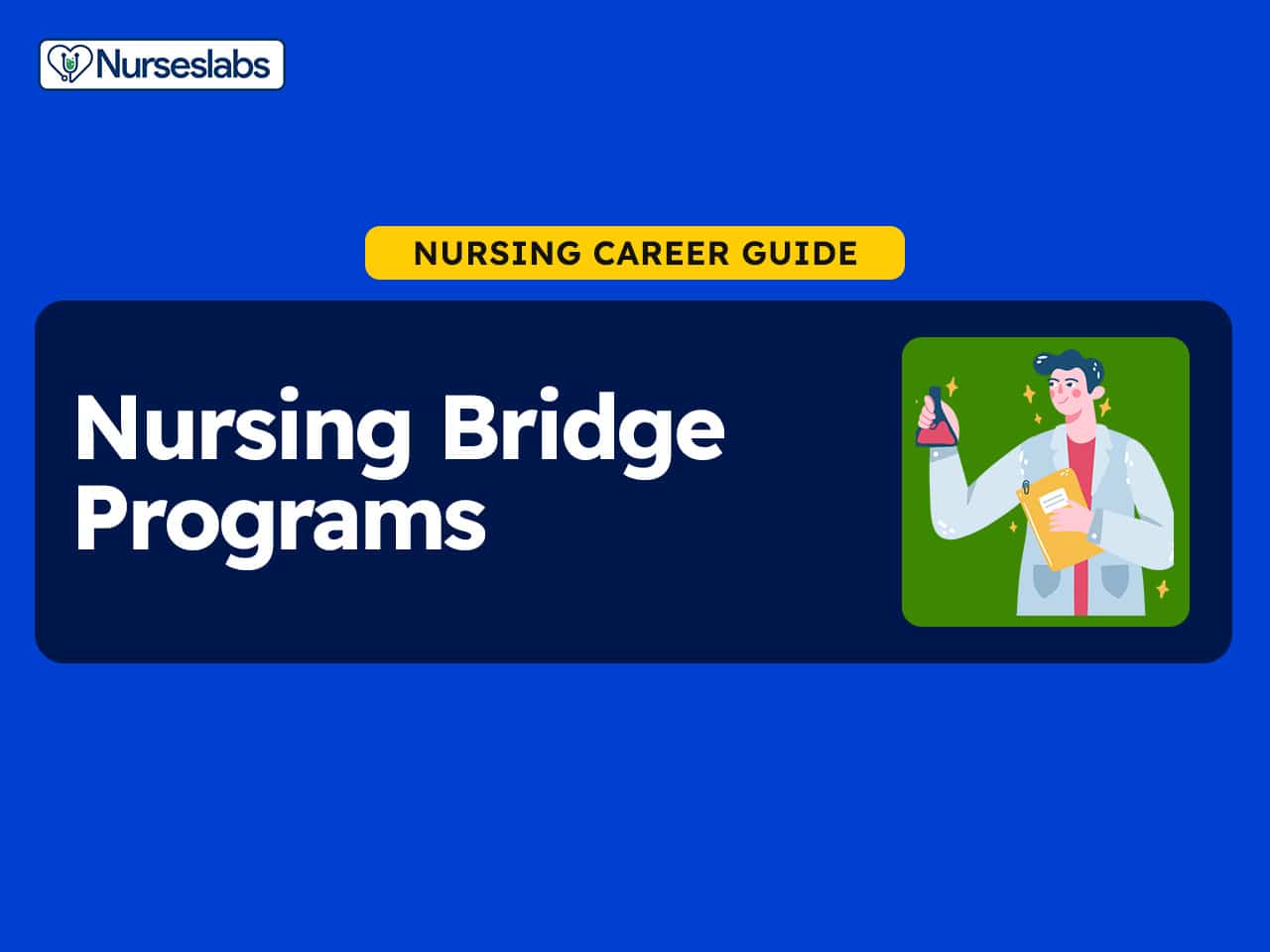
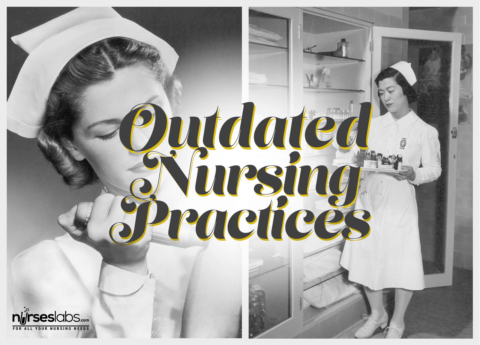
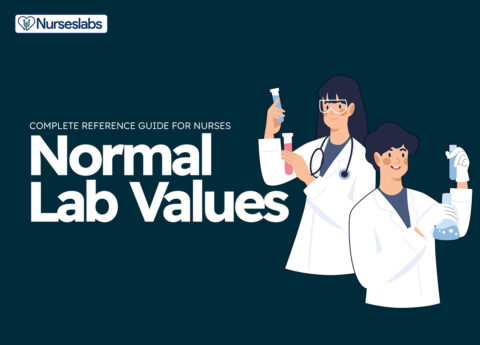
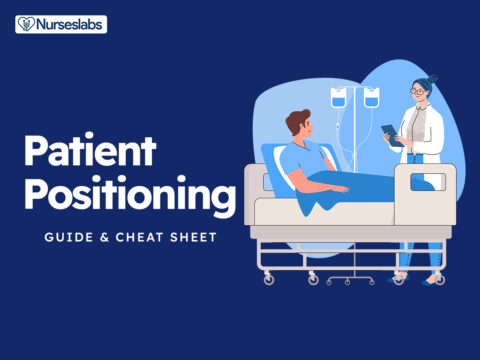
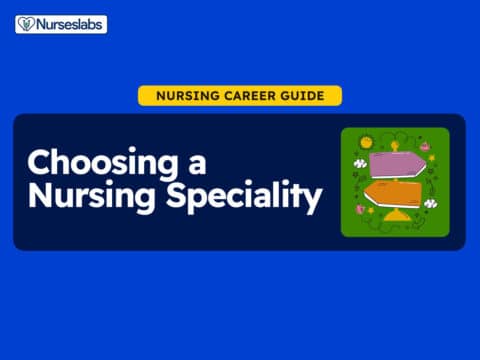
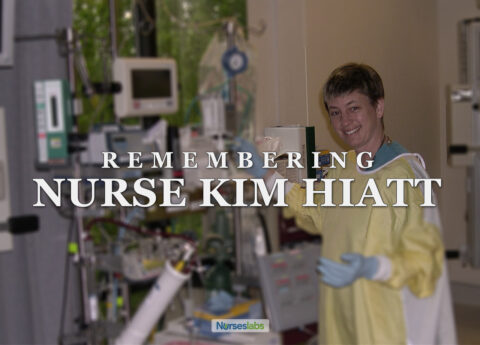
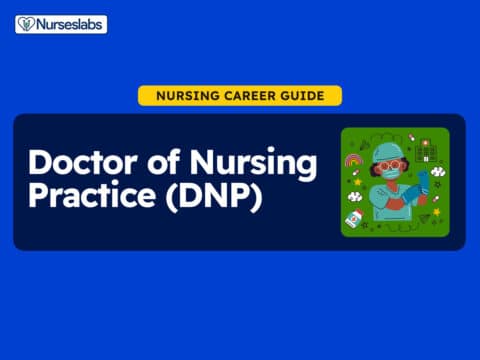
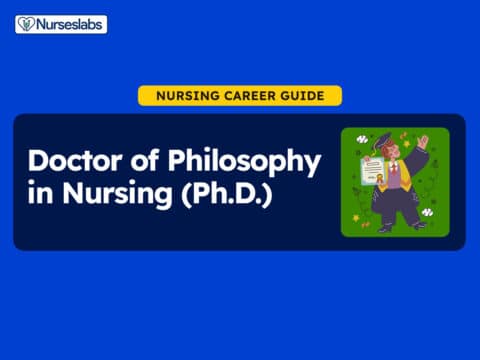
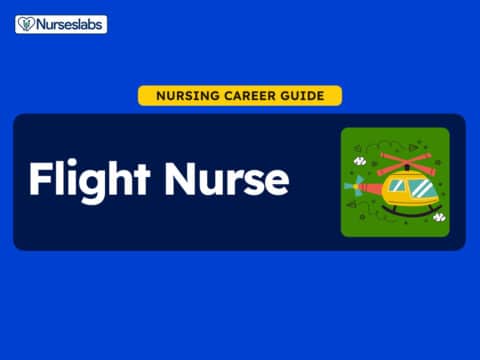
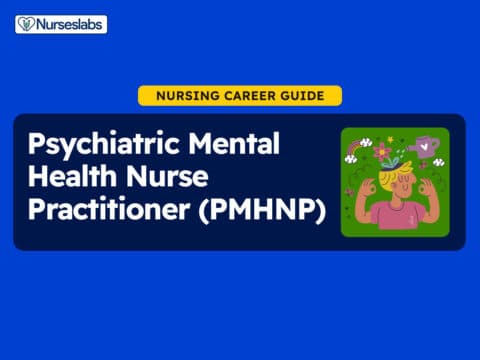
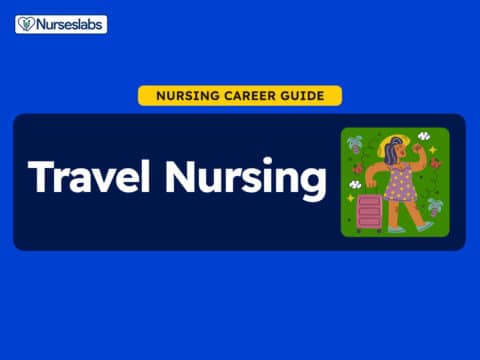
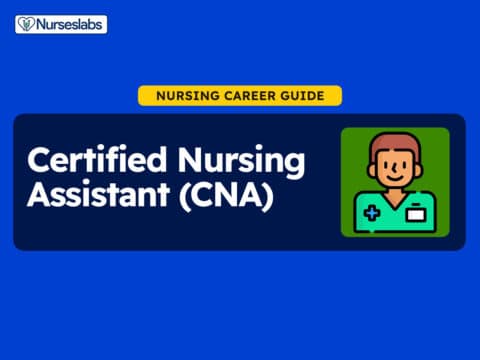
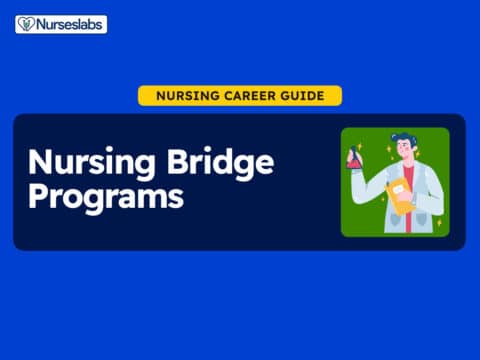
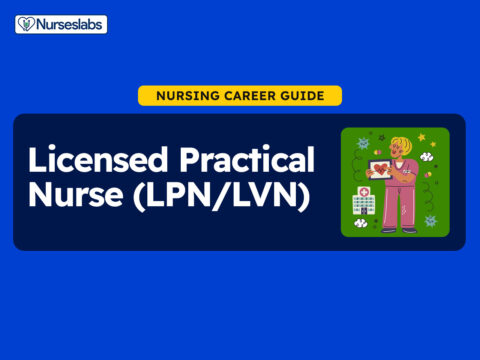
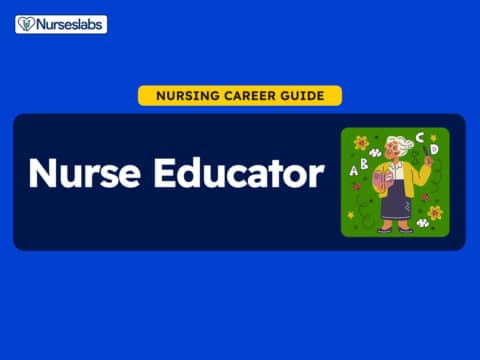
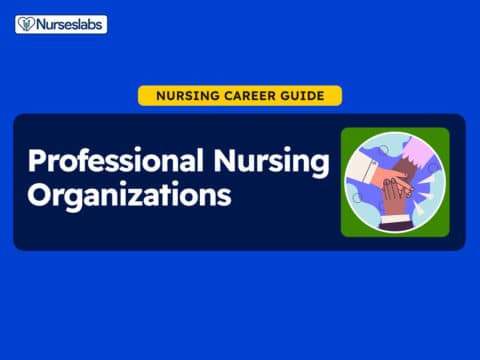
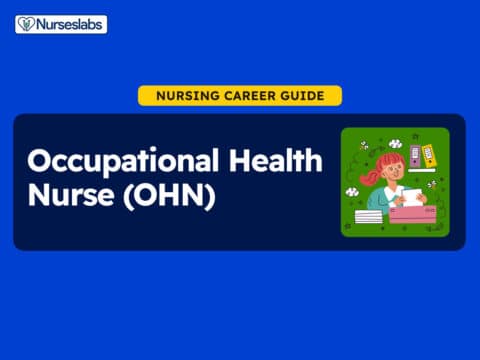
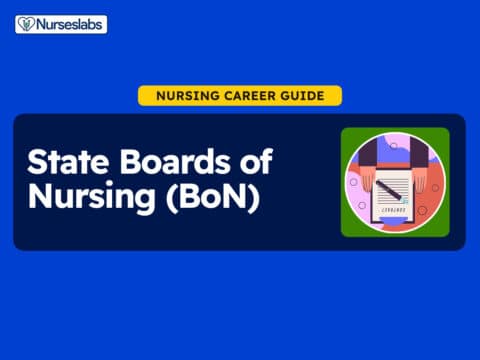
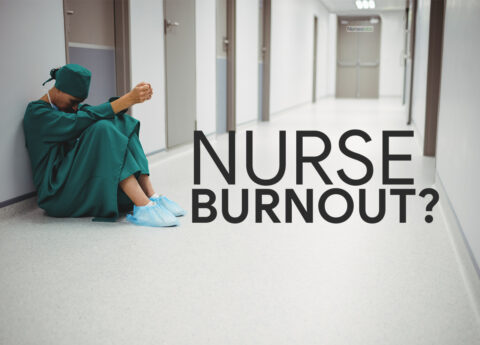
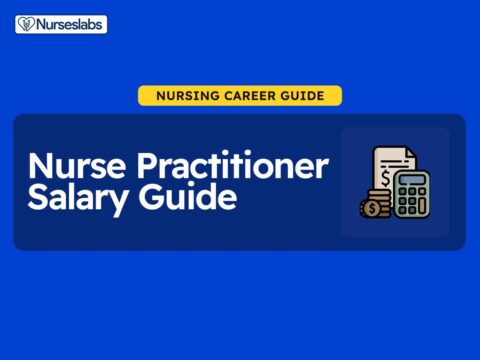
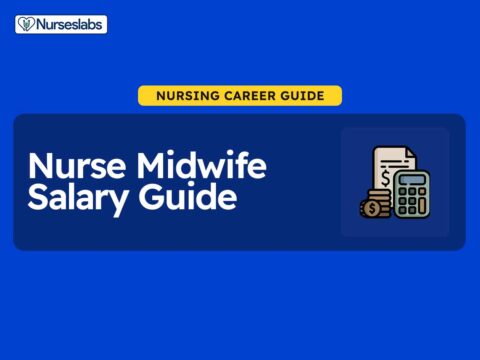
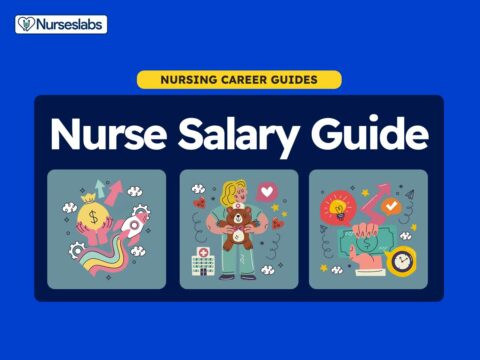

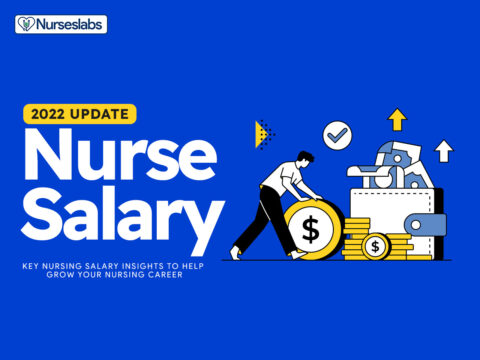
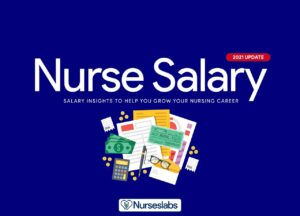
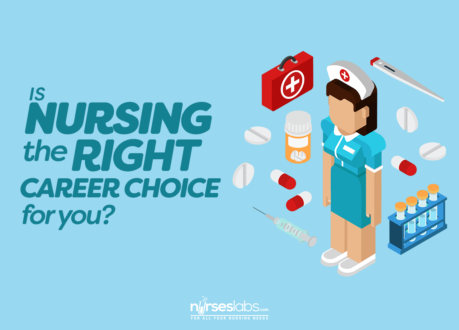
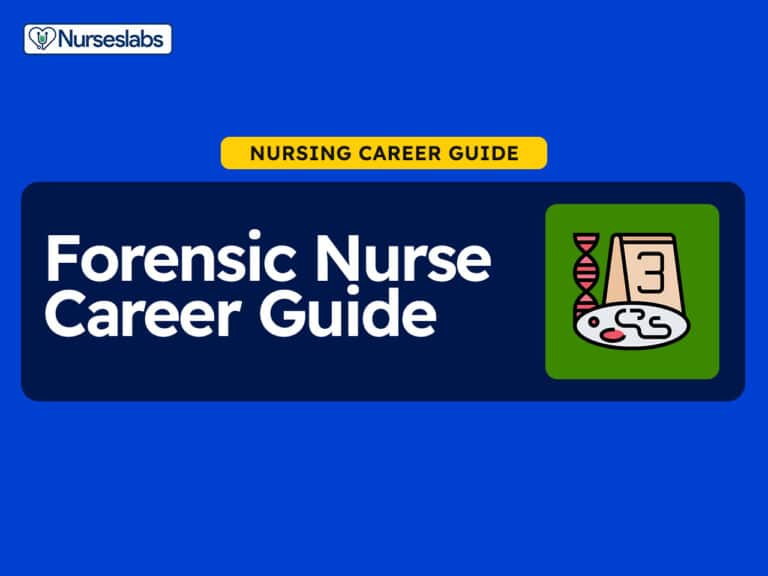

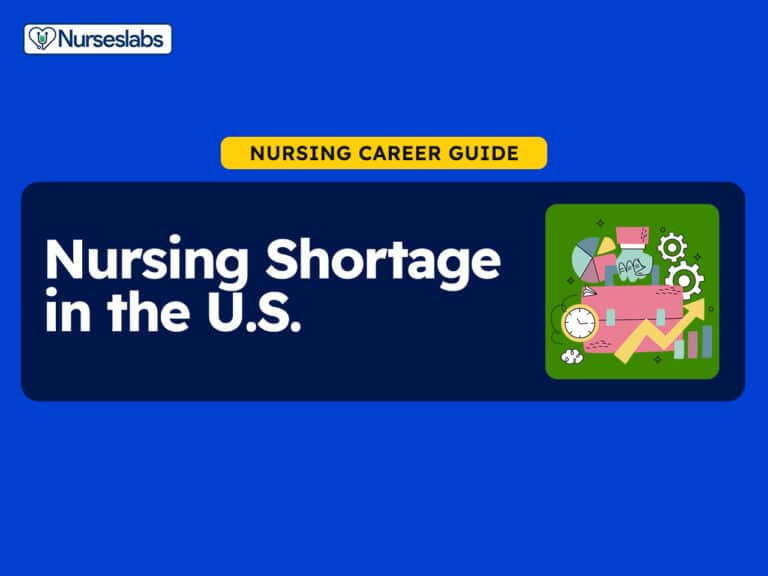
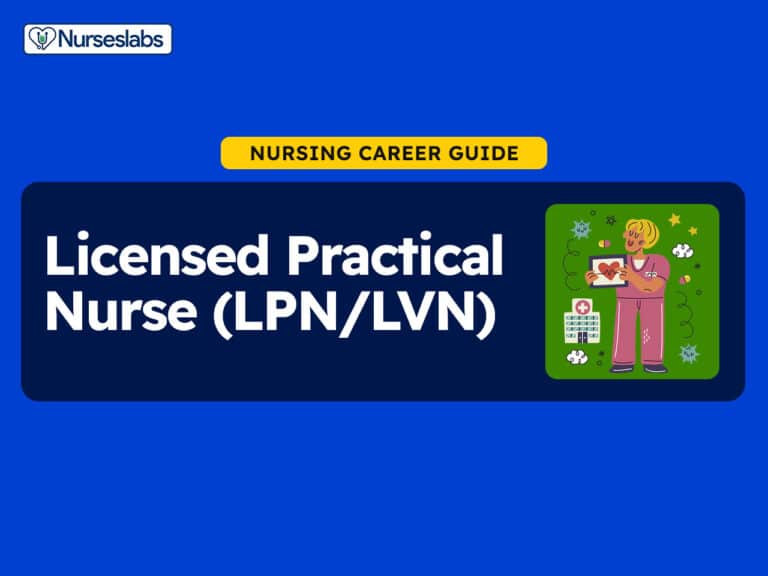
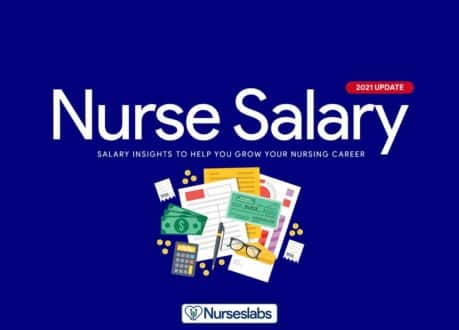
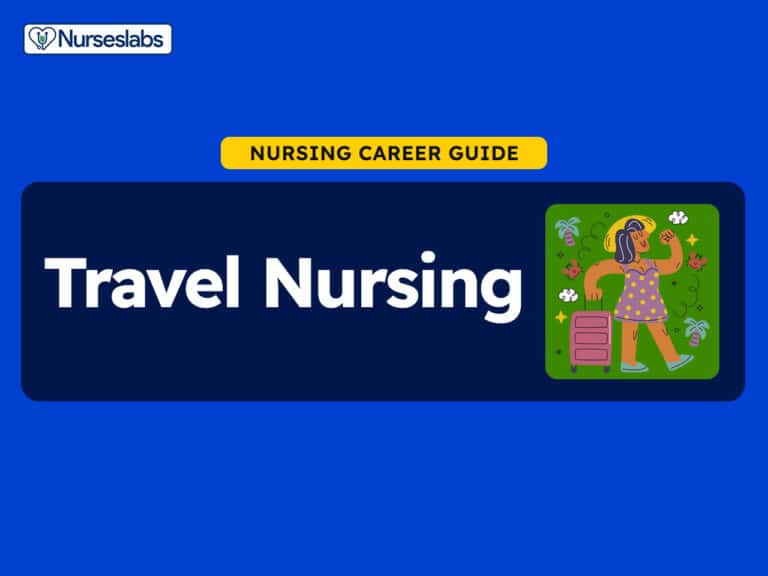
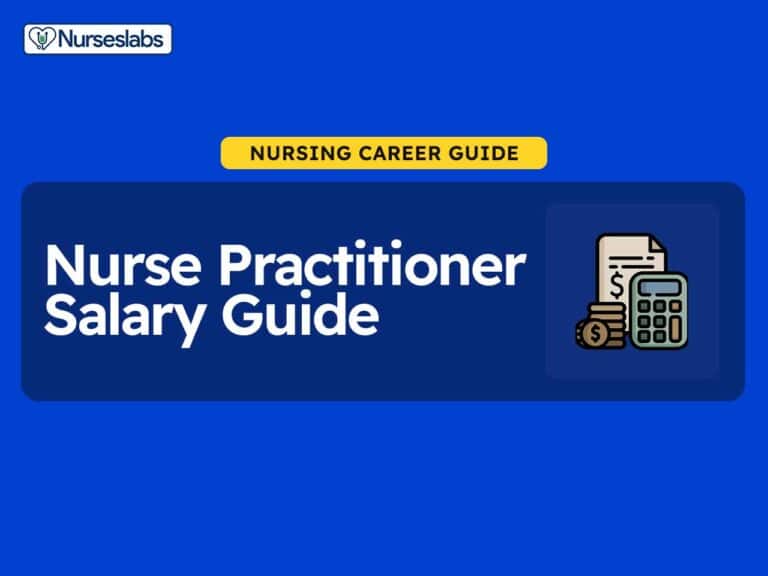
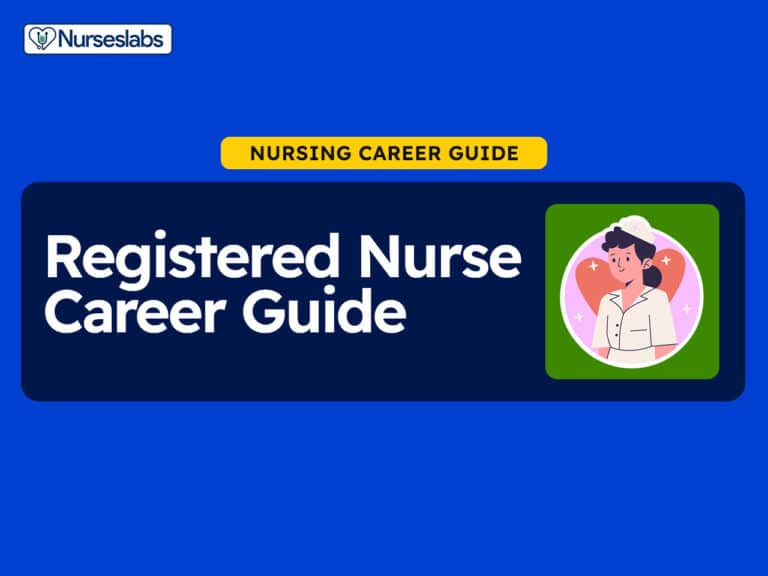
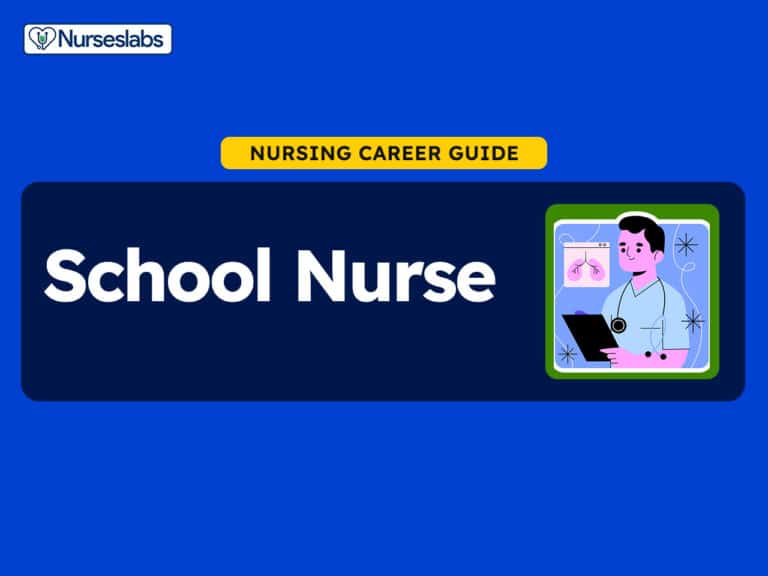
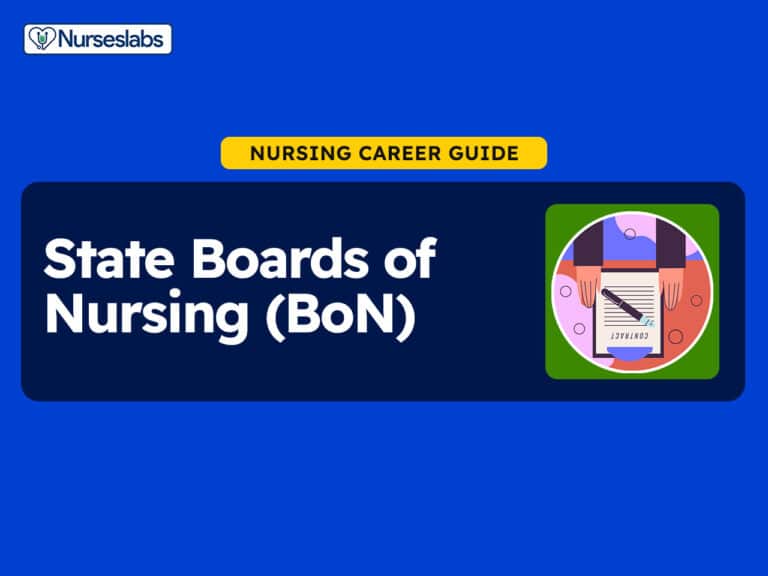
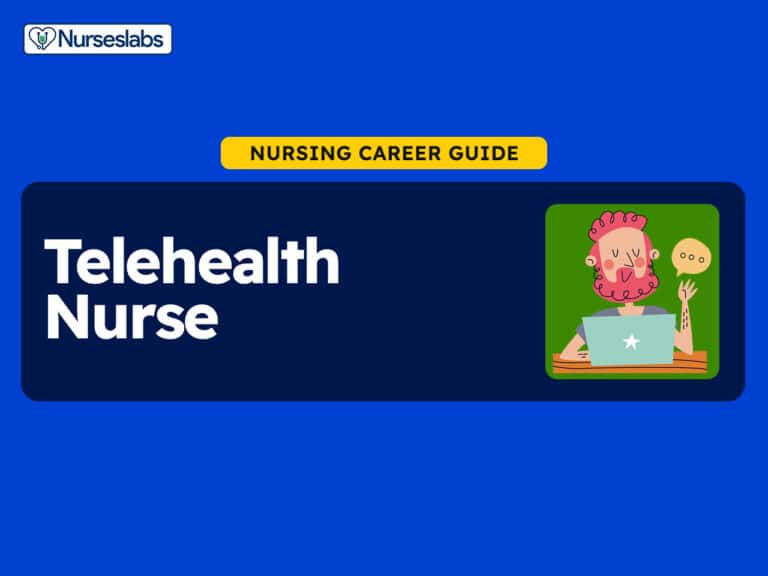
Leave a Comment